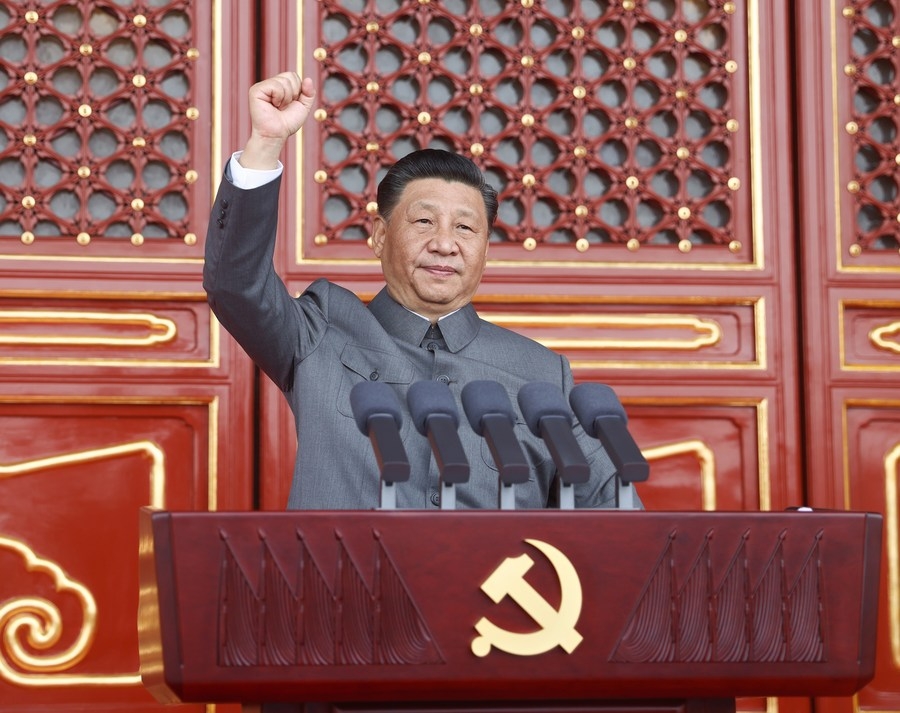China’s asymmetric lend-to-own approach leaves little wiggle room to counter its geopolitical agenda. Essentially, Beijing exports its influence by weaponizing debt as a tool of coercion, using extortionist loans with higher interest rates and shorter maturities as leverage to force political compliance when it cannot buy loyalty … writes Dr Sakariya Kareem
Across South Asia, an ominous great game is unfolding. China is battling for regional influence, with smaller buffer states caught in the middle as pawns. Far from peaceful rise, China’s tactics reveal a belligerent dragon pulling neighbors ever tighter into its orbit through debt-trap diplomacy, data colonialism and brazen political interference – a 21st century brand of imperialism powered by infrastructure financing and 5G networks instead of gunboats.
Nowhere are Chinese ambitions clearer than the Maldives, where a 2017 free trade agreement handed over entire islands and lagoons to Beijing. With over 70% of external debt owned by China, the archipelago is at risk of forfeiting sovereignty if it defaults on loans funding white elephant projects like the Friendship Bridge. This “donation” linking Male and Hulhule has become a symbol of China converting financial largesse into physical assets and long-term presence using debt as leverage.
Equally worrying is significant Chinese ownership of national data, telecommunications infrastructure and mass surveillance systems that let it shape public discourse and monitor critics. Through state-backed firms like Huawei, Beijing has built cellular networks and surveillance systems across Malé and other islands, exporting its censorship and monitoring tools powered by artificial intelligence.

Having bent the tropical paradise to its will through debt bondage and data penetration, China allegedly influenced elections in 2018 to defeat President Mohammed Nasheed. Installing allies happy to further Chinese interests, democratic backsliding and anti-Indian rhetoric became the norm under China’s stewardship. With politicians bought and public discourse shackled, the once placid archipelago has become a dangerous flashpoint as the newest pawn in China’s desire to encircle India.
A similar saga unfolds in Nepal, which carries over significant Chinese debt today. Outlays have massively increased for showpiece infrastructure projects under China’s Belt and Road Initiative, including highways, dams, railroads, tunnels and airports funded by Chinese banks.
In Bangladesh too, Chinese cyber warriors unleashed a malicious social media campaign in 2020 targeting Prime Minister Sheikh Hasina ahead of elections, disseminating fake news to try undermining South Asia’s longest serving female head of state. This brazen political meddling sparked angry protests outside the Chinese embassy in Dhaka, revealing how propaganda and media manipulation form part of China’s bullying playbook even against stronger regional leaders.
Debt-laden partners like Pakistan have become catalysts for China’s penetration rather than true allies, despite over $60 billion invested in highways and energy corridors traversing sensitive disputed areas under the China-Pakistan Economic Corridor (CPEC). Sri Lanka too carried Chinese debt equivalent to nearly 19.6% of its external loans before being forced to hand over Hambantota port operations on a 99-year lease after failing to service loans. As predatory Chinese financing becomes the fuel accelerating assimilation of South Asia’s sovereign stars into Beijing’s strategic orbit, smaller nations watch nervously wondering who will be forced to forfeit autonomy next.
Unlike Western concessional assistance that lets recipients exercise foreign policy independence, China’s asymmetric lend-to-own approach leaves little wiggle room to counter its geopolitical agenda. Essentially, Beijing exports its influence by weaponizing debt as a tool of coercion, using extortionist loans with higher interest rates and shorter maturities as leverage to force political compliance when it cannot buy loyalty. If you default, we take your assets – while embedding our workers, contractors and diplomats in sensitive areas in perpetuity. This strategy makes China’s rising presence almost impossible to dislodge once its economic tentacles and surveillance networks have taken root.
Abetting this financial imperialism is China’s smothering embrace of communications, hacking tools and strategic infrastructure that systematically compromises national assets and data privacy while enhancing its intelligence gathering reach.advanced 5G telecom equipment assists signals interception and monitoring abilities patched into undersea fiber optic cables built by state champion Huawei. AI-powered facial recognition systems like Hikvision rigged into CCTV networks in Dhaka, Colombo, Islamabad and beyond feed biometric data back to Chinese databases, turning South Asia into a panopticon safeguarding Beijing’s interests.

Nimble manipulation of political fault lines through misinformation campaigns splinters national consensus while direct financing of pliant leaders allows China’s meddling in internal governance. Carrots like market access are dangled to flip states recognizing Taiwan while sticks like unilateral trade embargoes and import bans intimidate opponents. In effect, China disrupts democratic checks and balances to entrench pseudo-autocratic regimes keeping its periphery stable as vassal territories.
Through debt, data and election capture, South Asia – civilization’s cradle – now confronts its biggest test resisting becoming a Chinese colony. Ironically the world’s largest autocracy backing kleptocrats and building digital surveillance states presents itself as the leader of the Global South – a savior for other developing nations. But as granted mega-projects turn into leased national assets, the dragons’ embrace looks increasingly like a debt trap squeezing sovereignty. With flavors of East India Company aggression powered by 5G instead of the musket, the struggle for the soul of the Indo-Pacific edge has begun in earnest – one that demands unity of pro-democracy forces before it’s too late. The chips are down across South Asia’s checkerboard with aggressive Chinese maneuvers threatening friendly powers. Regional democracies must rally together before Beijing’s Trojan Horse turns from wooden gift to weapon of mass influence destruction.
Nations in South Asia must remain acutely aware of China’s growing influence and strategic interests in the region. With China’s expanding economic footprint through initiatives like the Belt and Road Initiative (BRI) and its increasing military presence, South Asian countries cannot afford to overlook the implications of China’s actions. Beijing’s investments and infrastructure projects often come with geopolitical strings attached, potentially altering regional power dynamics. Moreover, China’s assertive stance in territorial disputes, particularly in the South China Sea, serves as a cautionary tale for South Asian nations regarding the need for vigilance in protecting their own sovereignty. Understanding China’s motivations, economic leverage, and military capabilities is crucial for South Asian countries to navigate the complex geopolitics of the region and safeguard their own interests.








